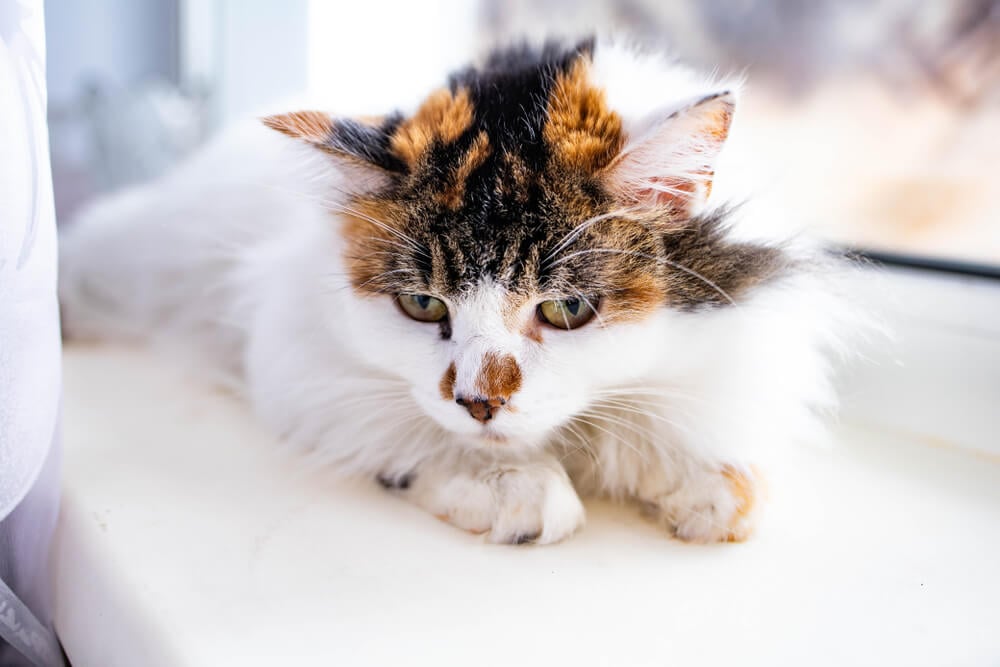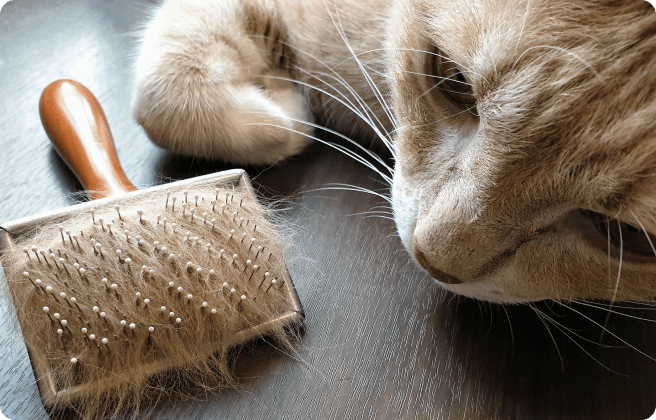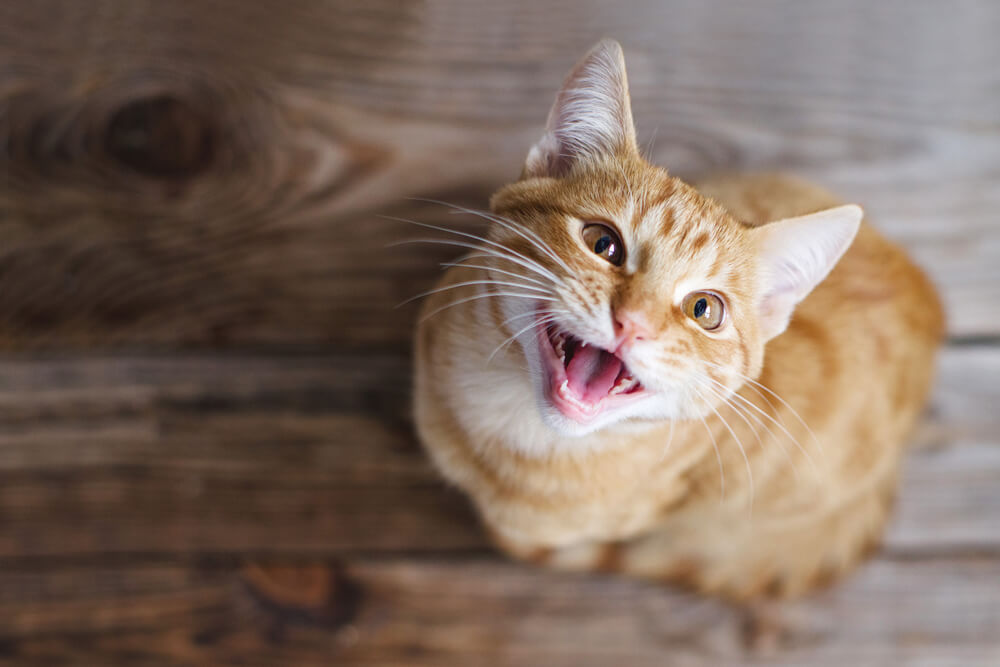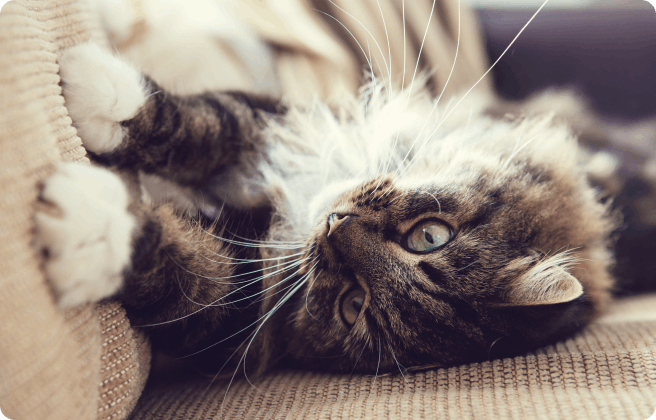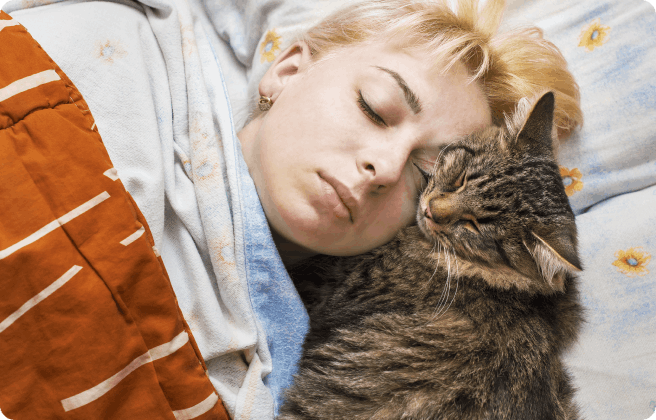
Most cat parents view it as an honor their cat would choose to nod off while resting on their laps or beds, and it’s definitely a sign the bond between you is strong.
If it’s starting to become inconvenient, however, there are gentle ways you can break the habit without hurting their feelings.
Just taking a catnap…
Many cat parents will be instantly familiar with this situation — you spend however much buying a top-of-the-range pet bed that looks temptingly cozy, even to your eyes, and set it up ready for a siesta, but your cat will choose to sleep anywhere else but there. In fact, more often than not, they’ll want to curl up on the sofa next to you or share your bed instead. Why is this?
Warm regards
Well, if you boil it down to the biological essentials, cats gravitate towards warmth. Yes, they’re covered in fur — most breeds, anyway — but they love being extra-toasty. That’s why it’s not uncommon to catch them lounging in the sunshine or even sitting underneath a recently turned-off car engine during the harsher winter months.
Your sleeping quarters are probably the coziest part of the house during the cooler nighttime hours, so can you really blame your cat for wanting to snuggle up with you? It’s also for this reason some cats have a tendency — annoying in some people’s eyes — to fall asleep on your head, what with this being the warmest part of your body and all.
Safe and sound asleep
At the same time, there’s a bit more at play here than just mere body temperature. Just like humans, cats are at their most vulnerable when they’re asleep and will seek out a safe environment before they lower their guard. Not only does a human being act as another source of protection for them, the fact they trust you enough to shut their eyes next to you just goes to show there’s a pretty close bond between the two of you.
Who’s been sleeping in my bed?
What’s more, if your sofa or bed is available for them to sleep on all day, consider the question from the cat’s perspective — “why are you sleeping in my bed?” Cats find it important to mark their territory, so they probably view these spots as just another one of their private spaces in the house in which to enjoy one of their many catnaps.
How can I stop a cat from sleeping on my bed?
For lots of parents, cats choosing to sleep on their bed or furniture isn’t a problem. In fact, it’s one of the cutest things to come from sharing a home with a pet. However, there are certain scenarios in which it’s preferable a cat didn’t treat your bed as their own — say if one of the occupants is a light sleeper or suffers from allergies. Also, you might want to keep them from your children’s beds for various reasons. So is there a way you can stop your cat from sleeping on beds or other pieces of furniture?
The most straightforward way to do this is simply to shut the bedroom door but, if your cat’s already in the habit of relaxing in there, you might hear some meows or scratching if they’re being denied entry. They should hopefully soon get the message, but it’s also possible to find strongly scented sprays that act as a natural repellant for keeping cats away from specific areas — some people swear by putting double-sided tape or aluminum foil around the offending zones.
At the same time, it’s important you provide lots of alternative spaces in the home where your can sleep undisturbed, perhaps with heated pads or previously slept-upon blankets so they can feel suitably safe and sound. Given some breeds spend up to eighteen hours a day snoozing, you want to make it as easy for them as possible to get some rest.
We uphold the highest editorial standards when creating the authoritative content pet parents rely on and trust.
Every piece of clinical content on the Cat Food Advisor is reviewed by our certified Veterinary Advisory Board, which consists of licensed veterinarians and medically certified specialists.
Our reviews are completely independent; we are not paid by any pet food company to promote their products favorably. We do not accept money, gifts, samples or other incentives in exchange for special consideration. For more information see our Disclaimer & Disclosure page.




